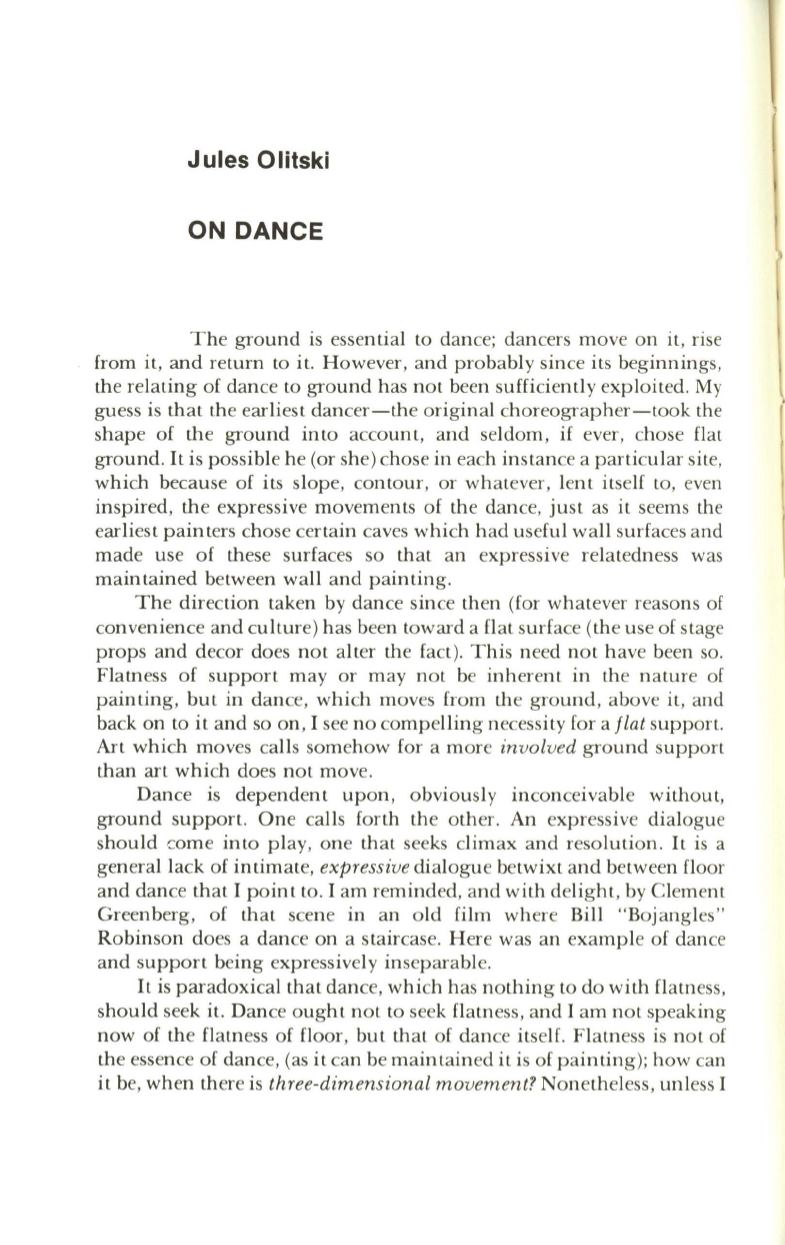
Jules Olilski
ON DANCE
The ground is essential to dance; dancers move on it, rise
from it, and return to it. However, and probably since its beginnings,
the relating of dance to ground has not been sufficiently exploited. My
guess is that the earliest dancer-the original choreographer-took the
shape of the ground into account, and seldom, if ever, chose £Iat
ground.
It
is possible he (or she) chose in each instance a particular site,
which because of its slope, contour, or whatever, lenl itself
to,
even
inspired, the expressive movements of the dance, just as it seems the
earliest painters chose certain caves which had useful wall surfaces and
made use of these surfaces so that an expressive relatedness was
maintained between wall and painting.
The direction taken by dance since then (for whatever reasons of
convenience and culture) has been toward a flat surface (the use of stage
props and decor does not alter the fact). This need not have been so.
Flatness of support mayor may not be inherent in the nature of
painting, but in dance, which moves from the ground, above it, and
back on to it and so on, I see no compelling necessity for a
flat
support.
Art which moves calls somehow for a more
involved
ground support
than art which does not move.
Dance is dependent upon, obviously inconceivable without,
ground support. One calls forth the other. An expressive dialogue
should come into play, one that seeks climax and resolution. It is a
general lack of intimate,
expressive
dialogue betwixt and between floor
and dance that I point
to.
I am reminded, and with delight, by Clement
Greenberg, of that scene in an old film where Bill "Bojangles "
Robinson does a dance on a staircase. Here was an example of dance
and support being expressively inseparable.
It
is paradoxical that dance, which has nothing to do with flatness,
should seek it. Dance ought not to seek flatness, and I am not speaking
now of the flatness of £Ioor, but that of dance itself. Flatness is not of
the essence of dance, (as it can be maintained it is of painting); how can
it be, when there is
three-dimensional movement?
Nonetheless, unless I


